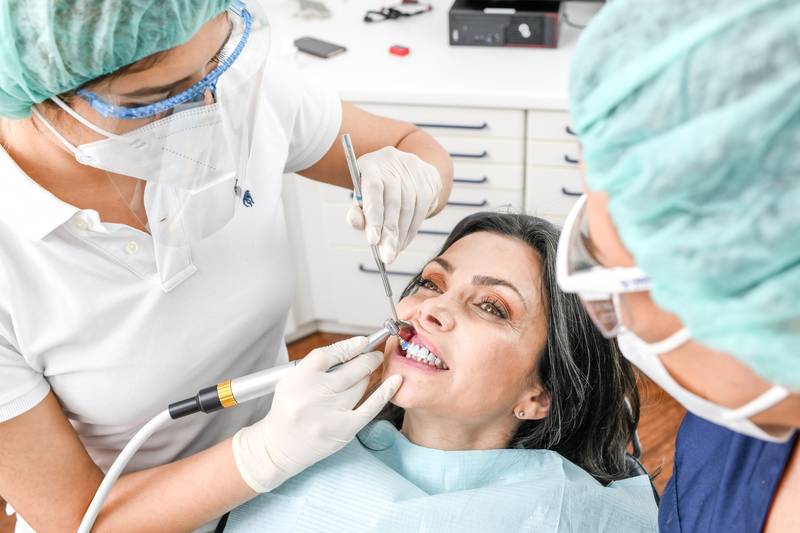Digital dental procedures - practice management - treatment - a megatopic of the IDS
Digital dental procedures are part of the daily routine of the modern dental practice: today, without them, patient management and treatment planning as well as many therapeutic measures cannot be carried out economically any more. Digital support, however, allows for a structured controll of these procedures despite their often diverse and complex nature. At the IDS 2015 many exhibitors will be presenting their product ranges for all kinds of everyday issues which come up in dental practices today.
Dr. Martin Rickert, Chairman of the Verband der Deutschen Dental-Industrie VDDI (Association of German Dental Manufacturers) comments: "At the IDS 2015, the offers available to digital dental practices will form a particular focal point for all visitors from the fields of dental medicine and dental technology. The product ranges exhibited contribute to simplifying workflows and, as a result, to reducing treatment times. But also material costs can be reduced with them. Together with the digital range for dental laboratories they create synergies with positive implications for practice management and therapeutic procedures. This is why the presentation of this 'state of the art' for dental practices will be a megatopic at the IDS 2015."
Products presented will include software for a most efficient patient management in dental practices of all sizes. They also feature integrated treatment planning functions, so operational and therapeutic procedures can be prepared and carried out efficiently. Especially comprehensive restorations must be coordinated in terms of timing, for example restorative measures and prophylactic measures, operations and prosthetic restorations. Firstly, because patients are interested in treatment which take the least amount of time, secondly, because practices can then optimise their workflows.
These days, evaluation procedures, diagnoses and therapy planning take place using digitally-controlled imaging procedures. Digital volume tomography (DVT) and computer tomography (CT) have established their place alongside the classic x-ray techniques - with imaging plate or CCD technology. In a detailed way, they indicate the soft and hard tissues of the jaw, as well as the nerves, and in so doing, support dental diagnoses and therapy planning.
For manufacturing particular restorations which fulfil the patient's individual needs, a scanner is also integrated in many of these devices, so that a 3D image of each patient's entire face can be captured and recorded. This image helps dentists and dental technicians when producing patient-specific restorations: the design of frameworks and red-white aesthetics supports cavernous lip and cheek areas. These scanners support dentists also when reconstructing jaws and teeth after face and jaw operations.
The data gained by CT or DVT are also used for implant planning. Due to the being able to digitally display the soft and hard tissues of the jaw, as well as the nerves, dentists are able to correctly select the necessary implants and position them in precisely the correct place. Using the drilling templates produced according to this data allows every individual implantation to be carried out via digital navigation. The range of planning software and their new features will be presented by many implant suppliers who will be present at the IDS 2015.
The electronic maxillomandibular relationship and its digitally-supported data collection are part of the digital workflow of dental practices. This technology is a valuable diagnostic tool, which also makes a substantial contribution to treating craniomandibular dysfunctions. Furthermore, in the process, advances in treatment can also be demonstrated which have been achieved via restorations that were specially carried out to fulfil the individual needs of the patients in question.
Special attention will be gained at the IDS 2015 by the intraoral scanner (IOS). This contributes to rendering prosthetic treatment workflows significantly more simplified and far more precise: they can be used to safely and quickly model preparation data. Patients and dentists equally profit from the use of this technology: treatment times are shortened, because the so-called "modelling compound" is no longer required, which has to remain in the mouth during the setting time. The advantage for dentists, among other things, is that it enables them to immediately examine their preparations on-screen, and view everything in detail by using the zoom function. If necessary, they can quickly re-record the preparation data.
Desktop scanners, too, which are able to scan moldings, will interest dental practices. The data transferred to the dental laboratory enables each patient's case and the possibility of a solution to be discussed within a short period of time together with the dental technician.
The preparation data gained directly via intraoral scanners or indirectly via a desktop scanner can however also be processed at the dental practice: chairside, using grinding equipment, as well as using milling and grinding equipment in the laboratory at the practice. Chairside, ceramic materials for direct restorations are used, for instance veneers, inlays, onlays or crowns; in the laboratory at the practice, frameworks made of oxide ceramics or plastic are also used, which are subsequently veneered. Since the IDS 2011 it is also possible to process cobalt chromium sintered alloys using the equipment mentioned. Another production route is also available to dental practices: the dental and industrial production of restorations. This is how dentists can view various production options, and select the option which is the most economically sensible for each case, in terms of indications and materials.
In addition to the large therapeutic field of dental prosthetics, a wide range of prophylactic treatment and restorative dentistry services will also be the focus of interest at the IDS 2015. This is because these sections are also hardly imaginable without digital technology - even if it is not spectacularly obvious: the impulses and displays from the equipment used for this purpose are digitally controlled.
"Dentists, practice staff, as well as dental technicians can attend the International Dental Show (IDS), the world's largest trade fair for dentistry and dental technology, in Cologne from 10 to 14 March 2015, and inform themselves in an optimal way about the current status of the ranges available for the digital practice. Exhibitor specialists, experts and experienced users will be prepared to exchange information", says Dr. Markus Heibach, Executive Director of the Verband der Deutschen Dental-Industrie VDDI (Association of German Dental Manufacturers).
IDS takes place in Cologne every two years and is organised by the GFDI Gesellschaft zur Förderung der Dental-Industrie mbH, the commercial enterprise of the Association of German Dental Manufacturers (VDDI) and staged by Koelnmesse GmbH, Cologne.
Note for editorial offices:
Photos from the last IDS Cologne are available in our image database (Image database) on the Internet at www.ids-cologne.de, "For the Press".
If you reprint this document, please send us a sample copy or link.
- Alter:
3553 Tage



